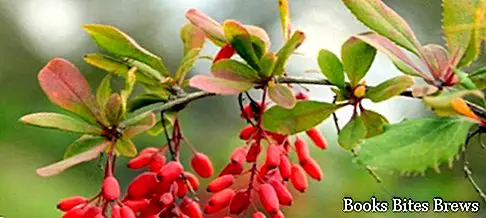What is Barberry used for, what are the therapeutic properties capable of bringing benefits to the organism, with preparations based on the bark, leaves and berries of this shrub, ideal for preparing infusions, herbal teas and decoctions.
Barberry properties
Shrub that can reach heights of over 3 meters, barberry is a plant with thin stems and branches.
On these stems there are leaves transformed into tripartite spines to whose armpit very small twigs are implanted that reach lengths not exceeding 3 millimeters.
Their leaves, almost totally devoid of petiole, have an elliptical shape and serrated edge, whose teeth have a short thorn in the final part.
The characteristic flowers have a calyx with six yellow sepals and a corolla with 6 petals, also of yellow color, each of which includes at its base two tiny glands that secrete a delicious nectar very appreciated by bees.
The fruits are made up of red berries collected in clusters.
With a flowering that takes place during the months of May and June, this plant is quite widespread in Italy, mainly in mountainous and hilly areas.
As for the properties, the bitter bark, toned for the stomach, has purgative effects when used in high doses.
The zest, which determines the contraction of the spleen, is used in metrorrhagia and dysmenorrhea.
It is frequently used against disorders of the digestive system, due to liver dysfunction, in chronic dyspepsias with relative loss of appetite and constipation.
The drug, by influencing the contraction of smooth muscle fibers, acts against metrorrhagia, both accompanied by uterine fibroids, and during the menopause period.
Recommended readings- Barberry: what it is used for, therapeutic properties of berries
- Mallow: what it is used for, therapeutic properties, infusion, decoction
- Holly: meaning, properties, infusion
- Birch: tree characteristics, herbal tea leaves, charcoal
- Absinthe: what it is, characteristics of officinal herb
The leaves are typically prescribed in chronic dysentery.
A barberry infusion is very useful for gargling in cases of angina, as well as for washing the sores and ulcers of the skin.
To make an infusion you need 4 grams of bark to put in half a liter of water to bring to a boil.
Add sugar and take in the quantity of two or three cups a day to distribute between meals.
It is possible to increase the dosage up to 50 grams of bark per liter of water, thus obtaining a tonic infusion.
To prepare a refreshing and diuretic herbal tea, 30 to 50 grams of berries are needed per liter of water, to be boiled and lightly sweetened before drinking.




